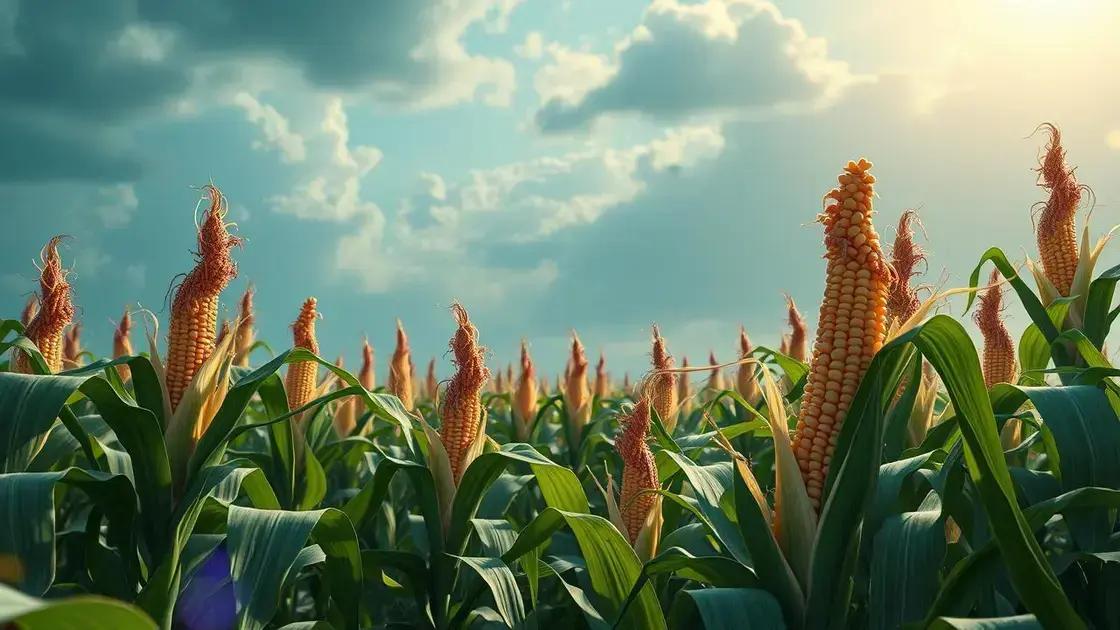How to Take Care Corn Plant: 7 Essential Tips for Thriving Growth
How to take care corn plant? This question often leads to deeper insights into the latest cultivation methods and best practices that promote vigorous growth. Understanding your corn plant’s unique needs is crucial for thriving greenery. Stay with us as we dive into essential tips for nurturing your corn plant.
Table of Contents
ToggleWatering techniques for healthy corn plants
Watering techniques for healthy corn plants are crucial to ensuring your plant thrives. Proper watering can significantly influence the growth and overall health of your corn plants. Understanding the specific needs of these plants will enable you to adopt the best practices for maintaining moisture levels in the soil.
- Watering frequency: Corn plants require consistent moisture. Depending on weather conditions, aim for watering once a week, adjusting based on rainfall.
- Deep watering: Instead of frequent shallow watering, provide deep waterings. This encourages deeper root growth. Apply 1-2 inches of water at a time.
- Time of day: Watering in the morning, when temperatures are cooler, reduces evaporation. This ensures your corn plant absorbs most of the moisture.
- Drainage considerations: Ensure the pot or garden bed has adequate drainage. Standing water can lead to root rot, which is detrimental to corn plants.
Assessing moisture levels
Monitoring moisture levels is important for effective watering. Here are methods to assess soil moisture:
- Finger test: Insert your finger into the soil up to 2 inches. If the soil feels dry, it’s time to water.
- Soil moisture meter: Utilize a soil moisture meter for precise readings. This tool provides a clear indication of when your corn plants need water.
- Observe plant indicators: Yellowing leaves may signal overwatering while wilting indicates a lack of moisture.
The importance of watering
Proper watering foster healthy corn plant growth. It affects:
- Root development
- Leaf growth and photosynthesis
- Flower and kernel production
By properly watering your corn plants, you ensure their growth and vigor. You can also explore more about exploring indoor gardening techniques to enhance your gardening skills.
Optimal sunlight requirements for corn plants

Optimal sunlight requirements for corn plants are essential for their overall health and growth. Corn plants thrive best under sufficient light, which promotes photosynthesis and helps them develop strong roots and foliage.
Understanding sunlight needs
Corn plants require full sunlight for optimal development. Here’s what you need to know:
- Corn plants ideally need at least 6 to 8 hours of direct sunlight each day.
- Ensure they receive sunlight in the morning, as it helps warm the soil and promotes growth.
- Excessive shade from taller plants or structures can stunt corn growth.
Effects of sunlight on growth
The amount of sunlight your corn plants receive can impact several factors:
- Photosynthesis: More sunlight leads to more energy, enhancing photosynthesis, which is vital for growth.
- Yield: Adequate sunlight correlates with better yields and healthier ears of corn.
- Pest resistance: Well-sunned corn plants tend to be stronger and less susceptible to pests.
Overcoming sunlight challenges
If your corn plants are not getting enough sunlight, consider these solutions:
- Relocate pots to sunnier spots if growing indoors.
- Trim surrounding plants that shade your corn.
- For indoor growers, use grow lights to supplement natural light.
By ensuring your corn plants receive the right amount of sunlight, you can significantly enhance their growth. Interested in more tips? Check out exploring indoor gardening techniques for a comprehensive understanding of plant care.
Common pests and how to handle corn plant issues
Common pests and how to handle corn plant issues can pose significant challenges to maintaining healthy corn plants. Recognizing the pests that commonly afflict corn and knowing how to address these issues is vital for optimal growth and yield.
Identifying common corn pests
Some of the most prevalent pests include:
- Corn earworms: These pests can be found in the ears of corn, damaging kernels.
- Rootworms: They target the roots of the corn plant, hindering growth.
- Flea beetles: Small insects that cause damage to leaves, which leads to a decrease in photosynthesis.
- Aphids: Tiny insects that suck sap from the plants and can transmit diseases.
Preventing pest infestations
To effectively manage pests, follow these prevention tips:
- Crop rotation: Avoid planting corn in the same spot each year to reduce pest populations.
- Physical barriers: Use row covers to protect young plants from insect pests.
- Regular monitoring: Frequently check plants for any signs of pests early on.
Treatment options for corn pests
If pests are detected, consider these treatment options:
- Insecticidal soaps: Effective for soft-bodied pests like aphids.
- Neem oil: This natural pesticide can help control various pests and has dual pest control and fungicide properties.
- Beneficial insects: Introduce ladybugs or lacewings to the garden, which can help keep pest populations in check.
By knowing how to handle corn plant issues and successfully managing pest problems, you promote healthier plants and better yields. For additional insights, check out exploring indoor gardening techniques for effective plant care methods.
In conclusion
Caring for corn plants effectively is essential for their growth and productivity. By implementing proper watering techniques, ensuring optimal sunlight exposure, and managing common pests, you can create a thriving environment for your corn plants. Remember that attentive maintenance and understanding specific needs will lead to healthier plants and more abundant yields. For further insights, check out tips on enhancing your indoor garden.

